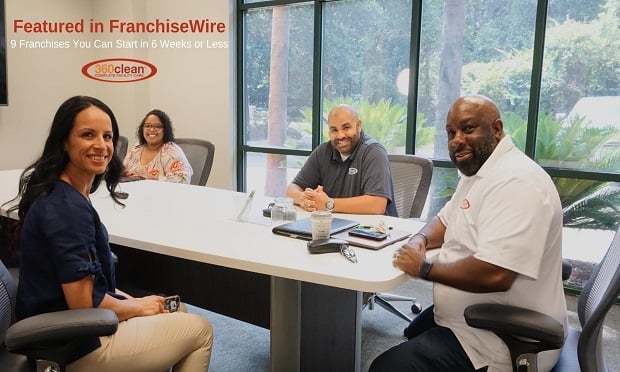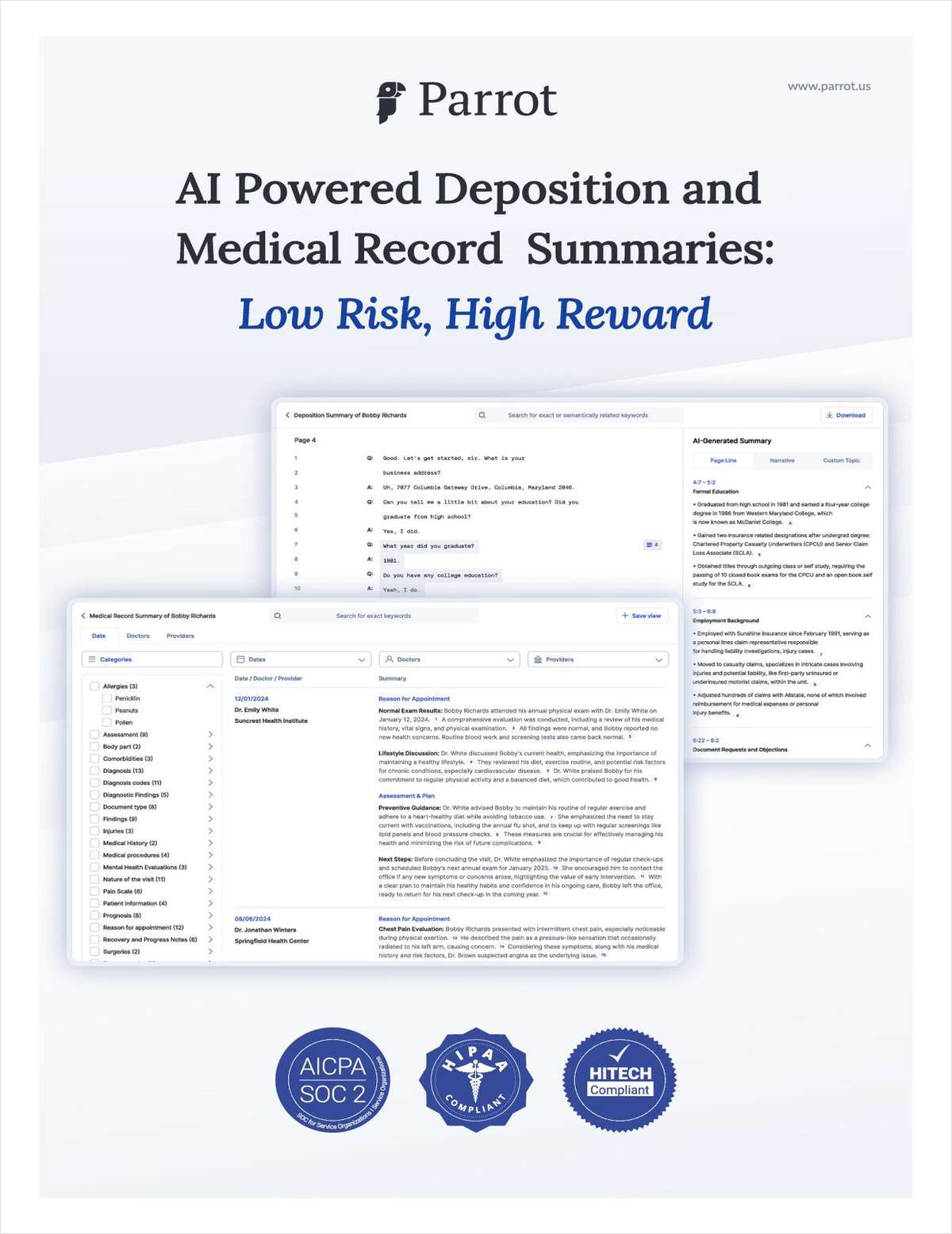The insurance industry's economic role — and untapped potential
There's a huge opportunity for the insurance sector to close a combined record protection gap of $1.2 trillion in 2018 premium equivalent terms.
January 07, 2020 at 08:00 AM
5 minute read
The original version of this story was published on Law.com
Insurance resilience indices measure the difference between needed and available protection.
The new Insurance Resilience Indices are based on measures of protection in place relative to protection needed between 2000 and 2018. These indices consider how insurance helps households withstand financial shocks from:
- Natural catastrophes;
- Death of a breadwinner; and
- Catastrophic health care spending.
The protection gap has more than doubled over the past two decades.
Our research also indicates that in absolute terms, the combined protection gap for the three risk areas more than doubled from 2000 to $1.2 trillion in 2018. That is roughly equivalent to a quarter of all premiums written by the global insurance industry. This demonstrates that the industry is operating far below its potential, a state of affairs that can burden governments, households and businesses with large financial losses in the event of a catastrophe or shock. The global natural catastrophe protection gap in premium equivalent terms was $222 billion in 2018. The protection gap for mortality risks was $386 billion, and it was $616 billion for catastrophic health care spending risks. Emerging Asia has the largest aggregate protection gap for the three risk areas combined ($456 billion). The region with the second-largest combined protection gap is North America ($208 billion), mostly driven by the U.S. ($194 billion). Advanced Europe has the third largest combined protection gap ($159 billion). Advanced Europe is the only region where the mortality protection gap is the largest of the three and higher than the health care protection gap. The latter reflects the well-established health care systems in the region. Advanced Asia is the only region where the natural catastrophe protection gap is the largest of the three, given the large earthquake exposures there.
How does insurance contribute to macro resilience?
We find that beyond the benefits at the micro-level, risk transfer to insurance markets has a macroeconomic value of increasing overall societal resilience. We modeled the response of GDP growth to major natural catastrophes and found that risk transfer to insurance markets boosts stronger recoveries post-disaster, particularly for emerging economies. In addition, in a different set of modeling, we found that higher insurance penetration is correlated with lower macroeconomic volatility. What are the transmission mechanisms from insurance to macro resilience of societies? First, insurers enhance the efficiency of risk management through risk pricing, transformation and pooling. This includes risk management in the corporate sector, where commercial insurance helps firms better withstand external shocks. Ex-ante risk management enables entrepreneurship and supports more efficient resource allocation. Through ex-post financial protection, insurance accelerates recovery. These micro-level impacts aggregate to build overall economic resilience. Second, insurance promotes financial stability by providing a stable source of long-term capital. Life insurers, in particular, are long-term institutional investors, a role that is important in stabilizing financial markets and improving macro resilience. Insurers are able to do this because of their illiquid liabilities and low capital leverage. Third, private insurance can complement or even substitute for government programs, reducing the burden on taxpayers. The relief offered by insurers is of particular relevance to fiscally- stressed governments, provided prudential regulation ensures the performance of the insurance sector during times of external shocks. Lastly, re/insurers provide economic incentives to facilitate loss mitigation, benefiting policyholders and society at large. Insurance can provide financial incentives and risk management expertise that promote best practice loss prevention measures, such as building standards, fire protection, etc. In catastrophe scenarios, the aggregate level of individual mitigation measures becomes part of resilience on a macro level. We estimate that closing this protection gap would improve global financial resilience by more than $1 trillion each year in the form of average additional insurance claims pay-outs for covered events. In order to realize this potential, governments, regulators, insurers and businesses need to work together to overcome the various supply and demand-side barriers that hold back greater uptake of insurance. Thomas Holzheu ([email protected]) is Swiss Re's chief economist for the Americas. See also:
This content has been archived. It is available through our partners, LexisNexis® and Bloomberg Law.
To view this content, please continue to their sites.
Not a Lexis Subscriber?
Subscribe Now
Not a Bloomberg Law Subscriber?
Subscribe Now
NOT FOR REPRINT
© 2025 ALM Global, LLC, All Rights Reserved. Request academic re-use from www.copyright.com. All other uses, submit a request to [email protected]. For more information visit Asset & Logo Licensing.
You Might Like
View All
Insights on transitioning from the corporate world to a successful entrepreneur
Trending Stories
- 1GOP Now Holds FTC Gavel, but Dems Signal They'll Be a Rowdy Minority
- 2Houston-Based Law Firm Overcomes Defamation Suit for Website Warning
- 3The Time Is Now for Employers to Assess Risk of Employees’ Use of DeepSeek
- 4Big Law Partner Co-Launches Startup Aiming to Transform Fund Formation Process
- 5How the Court of Public Opinion Should Factor Into Litigation Strategy
Who Got The Work
J. Brugh Lower of Gibbons has entered an appearance for industrial equipment supplier Devco Corporation in a pending trademark infringement lawsuit. The suit, accusing the defendant of selling knock-off Graco products, was filed Dec. 18 in New Jersey District Court by Rivkin Radler on behalf of Graco Inc. and Graco Minnesota. The case, assigned to U.S. District Judge Zahid N. Quraishi, is 3:24-cv-11294, Graco Inc. et al v. Devco Corporation.
Who Got The Work
Rebecca Maller-Stein and Kent A. Yalowitz of Arnold & Porter Kaye Scholer have entered their appearances for Hanaco Venture Capital and its executives, Lior Prosor and David Frankel, in a pending securities lawsuit. The action, filed on Dec. 24 in New York Southern District Court by Zell, Aron & Co. on behalf of Goldeneye Advisors, accuses the defendants of negligently and fraudulently managing the plaintiff's $1 million investment. The case, assigned to U.S. District Judge Vernon S. Broderick, is 1:24-cv-09918, Goldeneye Advisors, LLC v. Hanaco Venture Capital, Ltd. et al.
Who Got The Work
Attorneys from A&O Shearman has stepped in as defense counsel for Toronto-Dominion Bank and other defendants in a pending securities class action. The suit, filed Dec. 11 in New York Southern District Court by Bleichmar Fonti & Auld, accuses the defendants of concealing the bank's 'pervasive' deficiencies in regards to its compliance with the Bank Secrecy Act and the quality of its anti-money laundering controls. The case, assigned to U.S. District Judge Arun Subramanian, is 1:24-cv-09445, Gonzalez v. The Toronto-Dominion Bank et al.
Who Got The Work
Crown Castle International, a Pennsylvania company providing shared communications infrastructure, has turned to Luke D. Wolf of Gordon Rees Scully Mansukhani to fend off a pending breach-of-contract lawsuit. The court action, filed Nov. 25 in Michigan Eastern District Court by Hooper Hathaway PC on behalf of The Town Residences LLC, accuses Crown Castle of failing to transfer approximately $30,000 in utility payments from T-Mobile in breach of a roof-top lease and assignment agreement. The case, assigned to U.S. District Judge Susan K. Declercq, is 2:24-cv-13131, The Town Residences LLC v. T-Mobile US, Inc. et al.
Who Got The Work
Wilfred P. Coronato and Daniel M. Schwartz of McCarter & English have stepped in as defense counsel to Electrolux Home Products Inc. in a pending product liability lawsuit. The court action, filed Nov. 26 in New York Eastern District Court by Poulos Lopiccolo PC and Nagel Rice LLP on behalf of David Stern, alleges that the defendant's refrigerators’ drawers and shelving repeatedly break and fall apart within months after purchase. The case, assigned to U.S. District Judge Joan M. Azrack, is 2:24-cv-08204, Stern v. Electrolux Home Products, Inc.
Featured Firms
Law Offices of Gary Martin Hays & Associates, P.C.
(470) 294-1674
Law Offices of Mark E. Salomone
(857) 444-6468
Smith & Hassler
(713) 739-1250









